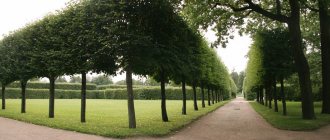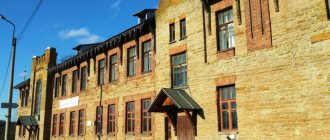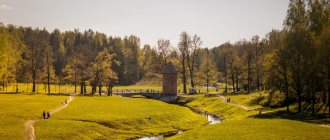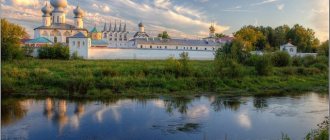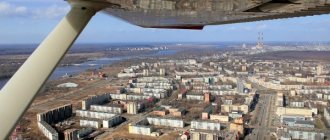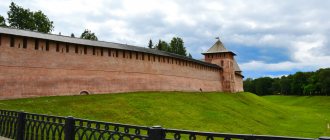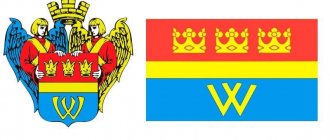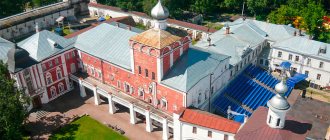Countless treasures are hidden in the vicinity of St. Petersburg and the Leningrad region. Exquisite palaces, magnificent parks and museums surround our beautiful city with a precious ring. Peterhof sparkling in the splashes of fountains, Pushkin drowning in the gold of autumn foliage, dear Pavlovsk or the mysterious Gatchina. It is hardly possible to find a person who will be indifferent to these royal residences. But the precious ring also has its own pearl. We are talking about Lomonosov or, as he was called before, Oranienbaum.
If you have a free day off and the sun, rare in our area, is shining through the window, do not stay at home. Hurry up to have breakfast and go on a pleasant trip to the not very crowded, but incredibly beautiful Lomonosov. (Or is it Oranienbaum?)
We offer you two options for traveling around this delightful suburb of St. Petersburg. And we assure you that in just a few hours you can see extraordinary sights there.
- Briefly about the history of Oranienbaum
- Option 1. Walk around Oranienbaum
- Option 2. Walk along Lomonosov
A few facts about the city of Lomonosov
- The city was founded in 1710, until 1948 it was called Oranienbaum.
- Lomonosov is located on the shore of the Gulf of Finland, opposite Kronstadt. The cities are connected by the Ring Road, the distance between them is approximately 20 km.
- Near the city there are suburbs: Peterhof and Strelna.
- The population of Lomonosov is about 43 thousand people.
Briefly about the history of Oranienbaum
So, let's start with history and try to clarify where Oranienbaum “came from” and what Lomonosov is. It must be said that we too were confused about these names until we established the truth. Although in this case it is hardly possible to finally understand it, since the origin of the name “Oranienbaum” remains a historical mystery. Let's start with what is known for certain.
The lands on which the Oranienbaum palace and park ensemble and the city of Lomonosov are now located were granted by Peter I to his closest ally A.D. Menshikov at the beginning of the 18th century. Construction of these places began in 1710. There are several versions of the origin of the name Oranienbaum. However, we like one historical episode told by the famous Soviet art critic Juliet KuchariantsD. A. Kucharians is a recognized researcher of the work of architect A. Rinaldi. The following episode is taken from her book “Artistic Monuments of the City of Lomonosov.” During the Northern War, a small greenhouse with orange trees was allegedly discovered on the site of Menshikov's future residence. Pomeranian is an evergreen citrus plant or bitter orange. Above each tree was written "Oranienbaum" in large letters. This amused Peter I so much that he ordered the name to be given to the manor. This is a separate estate with Menshikov’s farm. It is interesting that other names of this place have been preserved in historical documents - Oranib and Ranib.
In 1948, Oranienbaum was renamed Lomonosov. The choice of a new name is explained by the fact that nearby in the village of Ust-Ruditsa in 1753, Mikhail Lomonosov founded a unique factory for the production of colored glass. (By the way, smalt from this particular plant was used in the construction of one of the best attractions in the vicinity of St. Petersburg, the Chinese Palace in Oranienbaum.) Meanwhile, the railway station was left with a name from the past - Oranienbaum.
It’s interesting that locals lovingly call their city Rambov. Why is that? Maybe Oranienbaum is too long, and Lomonosov is not so characteristic. In any case, finding an answer to this question is an idea for a little research and a new article.
We can say with confidence that Lomonosov is the modern name of the city, Oranienbaum is the historical name of the city, and today the name of the palace and park ensemble and the railway station. Well, Rambov for the residents of Lomonosov is something like St. Petersburg for the residents of St. Petersburg.
So, having dealt with the historical names, it’s time to find out what you can see in Lomonosov or what to do in Oranienbaum. Let's go for a pleasant walk through the beautiful suburbs of St. Petersburg.
From the history of the city
The glorious biography of Lomonosov began in 1710, when construction of the estate of Alexander Danilovich Menshikov began in the vicinity of the current city. A small settlement quickly formed next to the luxurious palace, and a large park was laid out under the windows, and a canal was soon dug.
Since 1783, Lomonosov became a district town within the St. Petersburg province. The main treasury was located in it, and already the next year Lomonosov began to be built up according to “model projects”. The number of residents gradually grew, and less than a century later, a developed infrastructure, many shops and military units appeared on the Oranienbaum base.
During the reign of Catherine II, a new residence was built in Lomonosov: the Own Dacha. As well as many other elements of the entire complex: the Chinese Palace, the Rolling Hill, the Maid of Honor and even the Cavalry Complex. Next to the palace, the Upper Park, rich in original flora, was recreated with a regular garden and a landscape complex that was fashionable at that time.
By 1917, the number of townspeople had increased to 7 thousand, and Lomonosov was considered the country residence of the imperial couple. After the change of power during the revolution, much changed in the way of life of the old city. The usual street names disappeared, the palaces of eminent nobles turned into museums... The former Oranienbaum experienced particular suffering during the Siege. Fierce fighting took place near the city. But due to the desperate defense of Soviet soldiers, Lomonosov was not surrendered to the enemy. Therefore, many of the city’s historical heritage sites have been preserved.
And a century later, more than 43 thousand Russians live in Lomonosov. Nowadays, many cultural events are held in the “City of Military Glory,” and ancient palace complexes and parks are being actively restored. What sights of Lomonosov can you see now? Let's look at their features, operating mode and cost.
LOMONOSOV
LOMONOSOV, a city in Russia, part of the Petrodvortsovy district of St. Petersburg, the center of the Lomonosov district of the Leningrad region. Population 43.2 thousand people (2019). Located on the southern shore of the Gulf of Finland of the Baltic Sea. Railway station Oranienbaum. The following highways pass through Lomonosov: St. Petersburg - Sosnovy Bor and Petersburg Ring Road. Marine berths and the multifunctional transshipment complex “Bronka” (all as part of the “Big Port of St. Petersburg”).
Story
Lomonosov. Grand Palace. 1711–25. Architects J. M. Fontana, I. G. Schedel.
In 1702–03, during the Northern War of 1700–21, the territory of the modern city was occupied by Russian troops. In 1710, these lands were granted by Tsar Peter I to His Serene Highness Prince A.D. Menshikov, who established his ceremonial residence here under the name Oranienbaum. After Menshikov's disgrace (1727), Oranienbaum went to the treasury. Since 1737, the Grand Palace housed a hospital. In 1743–1761/62 Oranienbaum was the residence of Grand Duke Peter Fedorovich (future Emperor Peter III); 29.6 (10.7).1762 in the Japanese pavilion of the Grand Palace, Peter III signed the abdication of the Russian throne. Since 1780 the city of Oranienbaum. District (1780–96, 1802–48), provincial (1796–1802, 1848–1927) city of the St. Petersburg province (in 1914–24 – Petrograd province, in 1924–27 – Leningrad province). In the 19th century Oranienbaum has become a popular holiday destination. In 1831–73, the Oranienbaum palaces belonged to Grand Duke Mikhail Pavlovich and his wife Grand Duchess Elena Pavlovna, and in 1873–1917 – to the Dukes of Mecklenburg-Strelitz. In 1864 the railway was carried out. line New Peterhof - Oranienbaum, connecting the city with St. Petersburg. In 1907–10, the Izhora Military Railway was built, the beginning of the line was in the city of Oranienbaum.
During the Civil War of 1917–22 in 1919, the headquarters of the Workers 'and Peasants' Red Army troops was located in the city, which coordinated military operations to suppress the anti-Bolshevik uprising in the forts "Krasnaya Gorka" and "Grey Horse". In 1927–63, from 1965 the center of the Oranienbaum (in 1948 renamed Lomonosov) district of the Leningrad region. During the Great Patriotic War, in the fall of 1941, the offensive of German troops was stopped in the city area, and the so-called. The Oranienbaum patch, which played an important role in the defense of Leningrad. In 1948 Oranienbaum was renamed Lomonosov in honor of M.V. Lomonosov. In 1965–78 a city of regional subordination of the Leningrad region. In 1978–2003, the center of the Lomonosov district of Leningrad (in 1991 renamed St. Petersburg), since 2003 it has been part of the Petrodvorets district of St. Petersburg. City of Military Glory (2011).
Architecture
Ch. landmark of Lomonosov - state monuments. artist-architect. palace and park Museum-Reserve "Oranienbaum" (founded in 1918; modern name since 1993; since 2007 part of the Museum-Reserve "Peterhof"): palace and park ensemble with the oldest building of Lomonosov, the Great Palace in the style of Peter the Great's Baroque ( 1711–25, architects J. M. Fontana, I. G. Schedel), ch. the body of which is connected by arched galleries with the Church (St. Panteleimon Church, consecrated in 1727) and Japanese pavilions. From its main (northern) façade, a formal figured staircase (1772–75, architect A. Rinaldi) descends to the parterre Lower Garden (1713–27, garden masters H. Graz, Witsvol, according to the design of Fontana; reconstructed in 1740–50- e years, garden master L. Lamberti; fence - 1751 and 1777), United Arts. Sea canal with bay. Service corps from the south. the sides form a front courtyard (eastern wing - 1748–55, architect B.F. Rastrelli; western wing rebuilt by Rinaldi in 1778–80). The interiors were updated in the 19th century. 20th centuries (L. Ruska, K. I. Rossi, V. P. Stasov; G. A. Bosse; A. I. Stackenschneider, L. L. Bonstedt; G. A. Preuss, O. A. Paulson). Presumably, 5 so-called buildings were built according to Rastrelli’s designs. lower houses for palace employees (1749–51) on the left bank of the river. Karasta, the Picture House in the Lower Park (1752–55) and the Concert Hall to the west of the palace (1751–52), which was used by Rinaldi in the 1760s. as ch. landmark of the Triple Linden Alley, dividing the Upper Park (formed in 1762–74, master Lamberti) to the east. regular and zap. landscape part (in the late 1770s, the Upper Park became primarily landscape).
Lomonosov. Chinese Palace. 1762–68. Architect A. Rinaldi (built on and expanded in the mid-19th century). Photo by D. V. Solovyov
In 1756–62, a tree was built on the right bank of the Karasta. the amusing fortress of Peterstadt (engineer R. Kachalov, architect M. Hoffmann; in plan it was a 12-pointed star; dismantled in 1798), from which the Gate of Honor (1757) and the 2-story palace of Peter III (1758–62) have been preserved - the first buildings of A. Rinaldi in Russia. At the walls of the fortress, according to his own design, handy. L. Lamberti laid out Petrovsky Park in Italy. style (reorganized into a landscape park in the 1830s, master J. Bush). With the construction of dams on the river. Karasta is formed by the Red and Nizhny ponds.
Lomonosov. Pavilion of the Rolling Hill. Porcelain cabinet. Architect A. Rinaldi.
In 1762, according to the designs of A. Rinaldi, the construction of the so-called complex began. Catherine II's own dacha. His ch. building - located on the shore of the Chinese pond in the south. parts of the Upper Park, a one-story Chinese Palace in a transitional style from Baroque to Classicism (1762–68; in 1852–53, a 2nd floor was built on the south side, wings were added, architects A. I. Stackenschneider, L. L. Bonstedt). It received its name later due to the use of stylizations. motives whale. lawsuit The interior contains 15 rooms with a suite along the north. facade: Great Hall (elliptical in plan; bas-reliefs by M. A. Kollo; picturesque panels by S. Torelli) with adjacent Glass Cabinet, Plaster Room, Small Chinese Cabinet, etc.
In a complex of farms. The buildings of the Chinese Palace include the Cavalry Building (originally the Imperial Kitchen; 1767, A. Rinaldi; in 1807 the 2nd floor was added), the Chinese Kitchen (originally the Maid of Honor; early 1760s; rebuilt in 1852–53, L. L. Bonstedt), Palace Power Plant (early 20th century, architect O. A. Paulson). In zap. part of the Upper Park, a Rolling Hill was created with a preserved 3-story one. pavilion (1762–74, Rinaldi, restored in 1951–58; vestibule and spiral staircase with stucco work by A. Gianni and G. Spinelli; Round Hall and Porcelain Cabinet with paintings by S. Barozzi and S. Torelli; Hunting Cabinet in the style of classicism) and open stone galleries and trees dismantled in 1858–61. mountains-slopes for special strollers designed by A.K. Nartov. Not far from the Grand Palace there was a court Opera House (1759, architect Rinaldi; transported to St. Petersburg in 1824, soon burned down). The museum-reserve is included in the World Heritage List.
Lomonosov. Cathedral of the Archangel Michael. 1911–14. Architect A.K. Minyaev.
The city was built up according to plans approved by the emperor. Catherine II (1784, architect I.M. Leim) and Emperor. Nicholas I (1834). Projects for the mountains. buildings were created by architects V.P. Stasov, L. Ruskaya, A.I. Melnikov and others. From mid. 19th century Yeleninskaya Street parallel to Palace Avenue is being built. The following buildings have been preserved: the building of the Government Places (1815–24, architects Stasov, A. A. Mikhailov, D. Visconti), Mt. gate (1826–29, architects A. M. Gornostaev, I. I. Charlemagne), Shchukin’s house (1830s, Melnikov), arena of the Volyn regiment (1850–51, engineer A. Ya. Ferapontiev), .-d. station (1862–64, architect F. L. Miller), formerly Troitskaya Sloboda - c. Holy Trinity in the neo-Romanesque style (1903–04, architect I.P. Gorlensky), Cathedral of the Archangel Michael (1911–14, architect A.K. Minyaev), etc. In the 1950s. The House of Culture was erected in the style of the Owls. neoclassicism. In the 1960s–1980s. a new mountain was formed. center in the south parts of the city (administration buildings, House of Culture). Monuments: Gen. A. I. Safronov (1952), M. V. Lomonosov (1955, sculptor G. D. Glikman).
Centers of science and culture
Research Institute of Marine heating engineering (as part of the Marine Underwater Weapons – Gidropribor concern), state. Research Institute of the Ministry of Defense of the Russian Federation. Lomonosov branch of Vseros. Research Institute of Metrology named after. D. I. Mendeleev. All-Russian n.-i. Veterinary Institute of Poultry Farming, Russian Academy of Agricultural Sciences. South-West complex of continuous education (department of the North-West State Correspondence Technical University). Mor. Navy College (1945). Historical and local history specialist. museum (museum status since 1974), museum “Volyn Outpost” (2005).
Farm
A significant part of the workforce is employed at enterprises in St. Petersburg. The following enterprises operate in the city: “Lomonosov Ship Equipment Plant” (metal hatches, doors, portholes, etc.), “Rescue complexes and aquatic equipment” and its branch “Diving equipment and equipment” (both based on the production facilities of the 28th military plant ), “Production Company KMT – Lomonosov Experimental Plant” (equipment for railway passenger cars and the subway), “Linstack” (cosmetic products), “Kipensky Precast Concrete Plant”, food industry enterprises, etc.
Sights of Lomonosov
Oranienbaum Park
Oranienbaum is called the standard of landscape gardening art during the reign of the Romanovs. Its area exceeds 160 hectares, so it will take you a lot of time to walk around the entire park. The park is of particular historical and cultural value, since the periods of creation of new parts occurred in different historical periods.
The park's relief was created almost artificially. In Peter's times, forests were cleared and canals were laid. The park is crossed by the Karasta River, and the boundaries of the park are outlined by numerous alleys.
Great Menshikov Palace
The Grand Palace is considered the oldest building in Oranienbaum and in all of Lomonosov. It was with him that the biography of the city began. It is located on the very coast of the Baltic Sea. Thanks to the talents of the architects Schedel, Fontana and Braunstein, it seems as if it is directed towards the water.
The center of the palace is a two-story building with an exotic prince's crown on the roof. Next to it are round and spacious pavilions, and under the windows, in the times of Peter the Great, a garden with exquisite fountains and statues was laid out. Previously, visitors arrived at the Menshikov Palace through the sea canal.
The peculiarity of this architectural monument of the 18th century is that it has not been restored. Therefore, you should definitely see a true masterpiece of Russian architecture.
Chinese Palace
This majestic building is located in the southeast of Oranienbaum. Of all the buildings of the palace and park complex, it is the Chinese Palace of the architect Rinaldi that is a Rococo masterpiece. The palace was not captured by the Nazis during the war, so it was preserved almost in its original form.
Of course, the structure of the late 18th century needs restoration in any case. Therefore, it was carried out in 2011. Nowadays, the Grand Annex and the Hall of Muses, the unique Glass Bead Cabinet of Catherine II and the Blue Living Room are open to visitors.
Palace of Peter III
In the southwest of Oranienbaum is the palace of another Russian ruler - Peter III. It was also created by Rinaldi; immediately after construction was completed, the palace of Peter III became the center of the amusing fortress of Peterstadt.
Nowadays, this miniature palace is viewed from special earthen ramparts during excursions. A neat garden in the spirit of the 18th century has been formed around the palace of Peter III, and inside it there are exhibitions with household items. In the palace you can also see a number of exhibits from other museum complexes in St. Petersburg and Lomonosov. They were taken here during the hostilities of 1941-1945.
Museum-Pavilion Stone Hall
The Stone Hall is the name given to the pavilion in Oranienbaum Park. The name of its architect is shrouded in mystery, and the structure itself changed its name more than once: the New Palace, and then the Masquerade, Dance... Initially, concerts and holidays were held there, which is not difficult to understand from the names. In 1843, the pavilion was converted into the Lutheran Chapel of St. Helena, but after some time the Stone Hall was restored to its original Elizabethan Baroque charm.
Currently, the pavilion houses an interactive cinema and an exhibition of Oranienbaum statues. In the summer, classical concerts are held at the Stone Hall.
Lomonosov Museum of Local Lore
Address: st. Eleninskaya, house 25
The collection of the Lomonosov Museum of Local Lore exceeds 15,000 exhibits. Among them there are things of famous families: the Filatovs, the Bianchis, the Stravinskys, as well as many other symbols of the rich history of Lomonosov. These are the fruits of archaeological excavations in Koporye, ancient coins and utensils, photographs and artifacts from the Great Patriotic War, evidence of the special culture of the Ingrian Finns.
This free museum frequently changes exhibitions and offers its visitors tourist and excursion support.
Cathedral of the Archangel Michael
The history of the cathedral began with the appearance of a wooden church in 1865. It was created with donations from private donors. For a long time it was assigned to the palace Panteleimon Church, but eventually achieved sovereignty. During the Soviet period, the previously thriving cathedral was turned into a food warehouse. But already in 1988, work began on the revival of the cathedral itself and the adjacent bell tower.
The Neo-Russian Cathedral holds daily services and conducts regular religious processions. Its interior decoration is distinguished by its color, which was recreated by talented artists and woodcarvers in the 21st century.
Temple of St. Spyridon of Trimifuntsky
The first cathedral in honor of Spyridon of Trimifuntsky was built back in the 19th century; many trials befell the Orthodox shrine. Especially during the Soviet period. The revival of the temple began only in 2002 thanks to the efforts of Archpriest Oleg Emelianenko. Nowadays services are held there.
The temple houses a number of valuable icons brought from Greece and Jerusalem, as well as shrines - things of St. Spyridon. Several times a week special prayers are held with these relics, and if you are lucky, you will be able to see the extraordinary Orthodox sights of Lomonosov.
Memorial complex Malaya Piskarevka
Malaya Piskarevka appeared in the city back in 1973 and still retains the status of the largest military burial ground in the area. The memorial in honor of the tragic events of the Second World War is located on Krasnoflotskoye Highway, next to the railway tracks. In a small square, the dead townspeople and fearless defenders of the Oranienbaum bridgehead are buried in three mass graves. In total, about 5,000 people are buried here.
Not far from the memorial complex there are the Holy Trinity Cemetery and the church of the same name, a monument to the Little Road of Life and memorial granite fenced with metal chains.
Museum of the Polar Marine Exploration Expedition
The Museum of the History of the Expedition (as it is popularly called) is located on Pobeda Street. Its exhibition tells about Arctic research. The museum has two halls: the World Ocean and the Arctic. It is not difficult to guess what the display windows of each room are dedicated to.
Next to the museum there is a small park with unusual stone sculptures dedicated to the fauna of the Arctic and scientific work in the north. This is not the most spectacular green area where there are Lomonosov attractions. But why not get acquainted with modern landscape design if you find yourself in this distinctive city?
Menshikov Palace
The Great Menshikov Palace is the main attraction of Lomonosov. The Baroque-style structure proudly towers over the entire park complex and the Gulf of Finland, signifying the dominance of the Russian Empire on the Baltic Sea. The 210-meter-long palace delighted foreign guests who arrived in Oranienbaum by sea.
Menagerie
Hunting parks were traditionally set up at the royal residences; deer, hares and foxes were kept in them. It still exists in Oranienbaum today. Guests can visit the menagerie near the lower pond, which is home to mute swan, Cameroonian goat, peacock, fallow deer and Romanov sheep.
